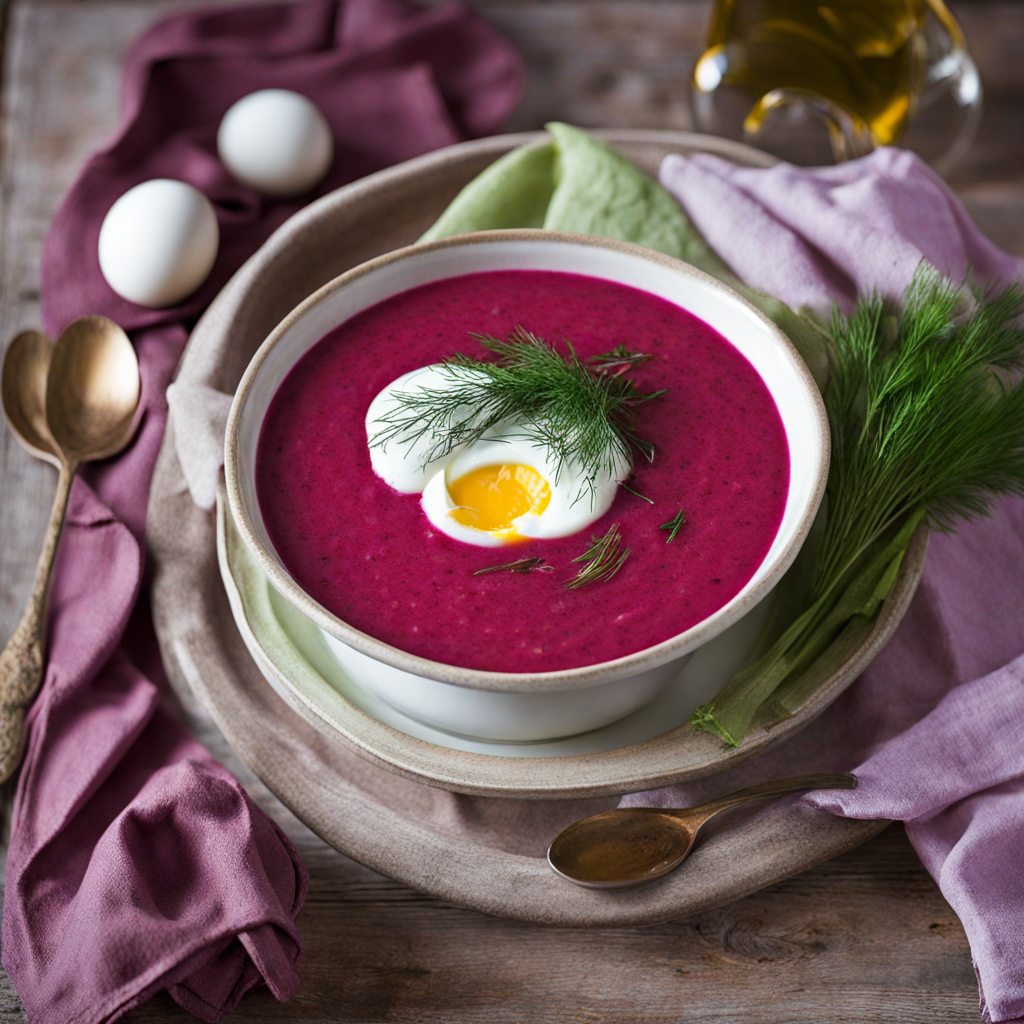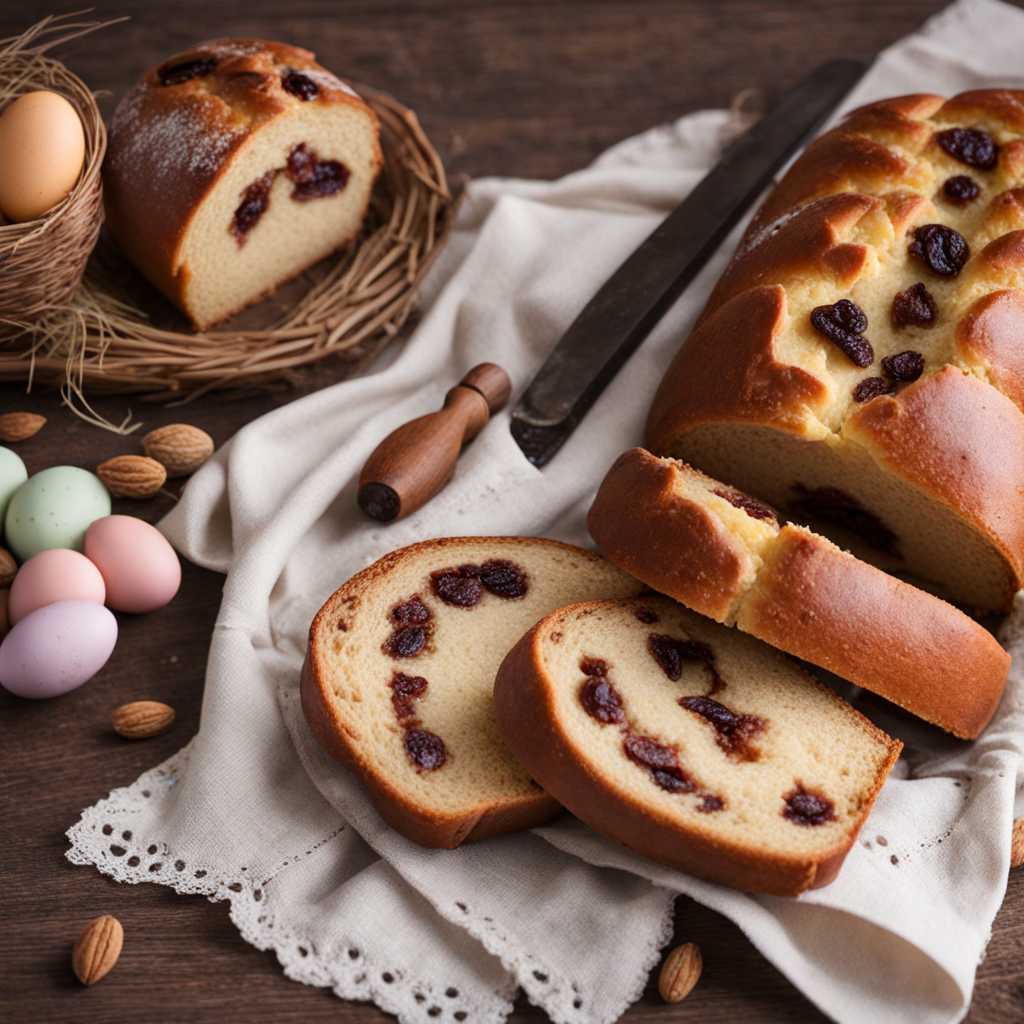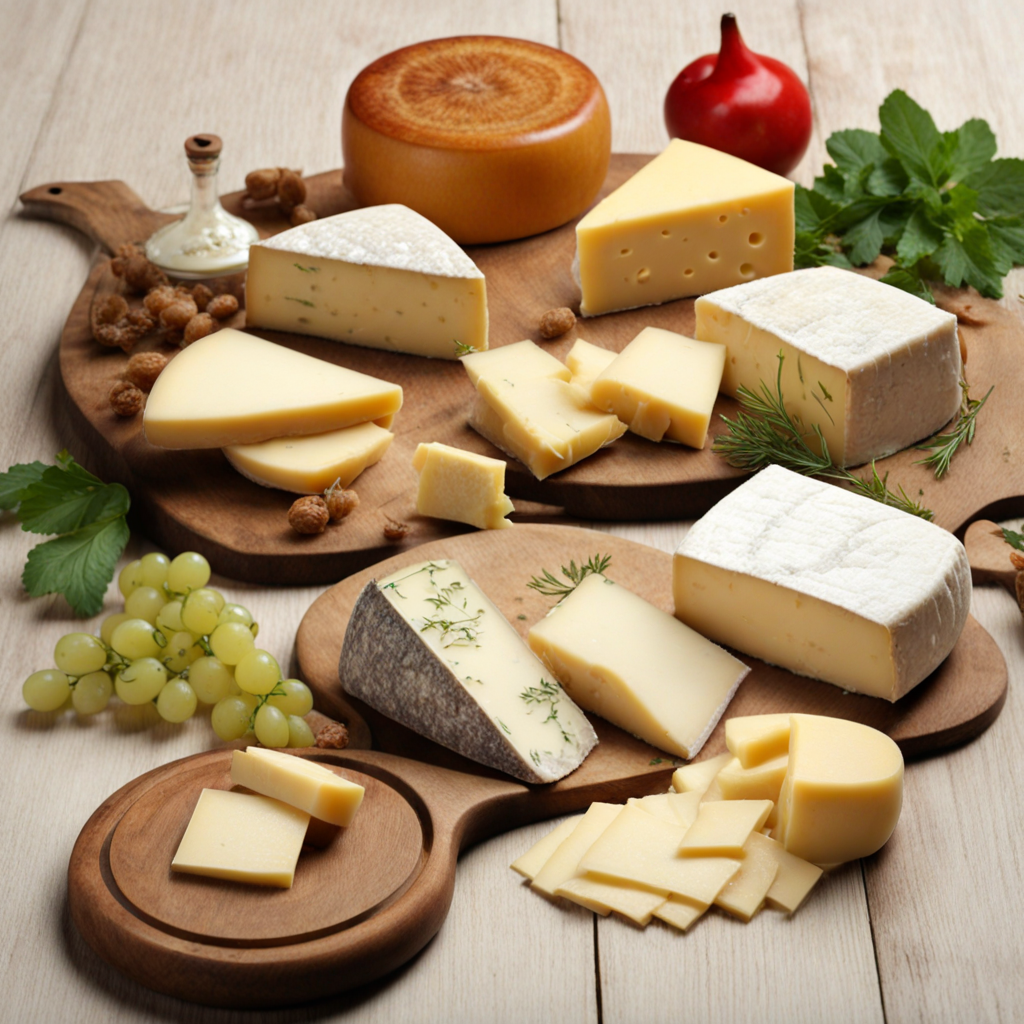Cold Beet Soup
Cold Beet Soup, known as "Šaltibarščiai" in Lithuania, is a vibrant and refreshing dish that perfectly embodies the flavors of summer. The base of this soup is made from finely grated or pureed beets, which give it a stunning magenta hue. This beautiful color is complemented by the addition of kefir or buttermilk, lending a creamy texture and tangy flavor that balances the earthiness of the beets. Chopped cucumbers, green onions, and dill are often mixed in, adding a crunchy freshness and aromatic notes that elevate the dish to new heights. The flavor profile of Cold Beet Soup is both unique and delightful. The slight sweetness of the beets harmonizes with the sourness of the kefir, creating a delightful contrast that excites the palate. Each spoonful offers a refreshing burst of coolness, making it a perfect dish for warm weather or as a light starter. The incorporation of seasonal vegetables not only enhances the taste but also provides a satisfying crunch, making this soup a feast for both the eyes and the taste buds. Served traditionally with a boiled egg on top and accompanied by crusty rye bread, Cold Beet Soup is more than just a dish; it’s an experience that connects you to Lithuanian culture. The vibrant color and unique flavors make it a showstopper at any table, inviting everyone to dive into this beautiful bowl of goodness. Whether enjoyed as an appetizer or as a light meal, Cold Beet Soup is a delightful way to explore the rich culinary heritage of Lithuania.
How It Became This Dish
Šaltibarščiai: A Chilled Emblem of Lithuanian Heritage Nestled in the heart of Eastern Europe, Lithuania boasts a rich culinary landscape that reflects its diverse history, geography, and cultural influences. Among the nation's most cherished dishes is Šaltibarščiai, a vibrant cold beetroot soup that has become synonymous with Lithuanian cuisine. This dish not only tantalizes the taste buds but also embodies the spirit and traditions of the Lithuanian people. Origins The roots of Šaltibarščiai can be traced back to the peasant kitchens of Lithuania, where seasonal ingredients were paramount. The dish is primarily composed of beetroots, which have been cultivated in the region for centuries. Historical documents suggest that beets were used in the diet of Lithuanians as far back as the 15th century, making them a staple ingredient during the harsh winters when fresh vegetables were scarce. The soup’s cold serving temperature is particularly significant, as it was a practical response to the warm summer months. In the pre-refrigeration era, chilled soups were an ingenious way to preserve ingredients while providing a refreshing meal. The use of beets, which can be stored for extended periods, ensured that families could enjoy this nutritious dish throughout the year. Cultural Significance Šaltibarščiai is more than just a dish; it is a cultural symbol that embodies the essence of Lithuanian identity. Traditionally served during the summer months, it is often enjoyed alongside boiled potatoes, hard-boiled eggs, and rye bread, a complete meal that reflects the agrarian roots of the Lithuanian populace. The soup’s vibrant pink hue, derived from the beets, is visually striking and represents the richness of Lithuanian agricultural products. In Lithuania, food plays a vital role in celebrations and communal gatherings. During festivals, family reunions, and national holidays, Šaltibarščiai is often served, showcasing the importance of shared meals in fostering community bonds. The dish also has a connection to Lithuanian folklore and traditions, often featured in cultural narratives that celebrate the agricultural lifestyle and seasonal cycles. Development Over Time As Lithuania has evolved, so too has the interpretation of Šaltibarščiai. The dish has remained true to its roots while adapting to modern culinary trends and influences. In the Soviet era, the availability of fresh ingredients fluctuated, altering the way traditional dishes were prepared. Beets remained a constant, but the addition of sour cream and fresh dill became more common, enhancing the flavor profile of the soup. In recent years, there has been a resurgence of interest in traditional foods, and Šaltibarščiai has gained recognition on the international stage. Modern chefs have begun to experiment with the classic recipe, incorporating elements from global cuisines while maintaining the essence of the dish. Variations now include the use of yogurt, kefir, and even vegan alternatives, allowing for a broader appeal and accommodating dietary preferences. Lithuania's growing culinary tourism has also played a role in elevating Šaltibarščiai. Food enthusiasts from around the world are drawn to the dish’s unique combination of flavors and its vibrant appearance. As visitors explore the Lithuanian countryside, they often seek out authentic experiences that include sampling local dishes, with Šaltibarščiai frequently at the forefront. The Ingredients and Preparation At its core, Šaltibarščiai is both simple and sophisticated. The base of the soup is made with cooked and grated beetroots, which are then mixed with either buttermilk, yogurt, or kefir, depending on regional preferences. The tangy dairy component is essential, as it not only adds creaminess but also contributes a refreshing flavor that complements the earthiness of the beets. To prepare Šaltibarščiai, the beets are first boiled until tender, then peeled and grated. The grated beets are combined with the chosen dairy product, water, and a splash of vinegar or lemon juice for acidity. Finely chopped cucumbers, radishes, and fresh dill are added, creating a harmonious blend of textures and flavors. The soup is then chilled, allowing the flavors to meld. It is traditionally garnished with a hard-boiled egg, cut in half, adding visual appeal and richness. A Contemporary Perspective In the 21st century, Šaltibarščiai has not only secured its place in Lithuanian homes but has also become a culinary ambassador for the country. The dish has been featured in various international food festivals and culinary showcases, where chefs highlight its versatility and appeal. As Lithuania continues to carve out its identity on the global culinary map, Šaltibarščiai stands as a testament to the enduring legacy of Lithuanian cuisine. Moreover, the popularity of Šaltibarščiai has sparked interest in other traditional Lithuanian dishes, leading to a renaissance of local ingredients and cooking techniques. The farm-to-table movement has gained traction in Lithuania, promoting sustainable agriculture and the consumption of locally sourced produce. This not only supports local farmers but also ensures that the culinary traditions are preserved and celebrated. Conclusion Šaltibarščiai is more than just a cold soup; it is a reflection of Lithuania’s rich history, cultural identity, and agricultural heritage. From its humble origins in peasant kitchens to its modern reinterpretations in gourmet restaurants, this dish has traversed time and space, adapting to changing tastes while remaining a beloved staple in Lithuanian cuisine. As Lithuania continues to embrace its culinary heritage, Šaltibarščiai will undoubtedly remain a cherished symbol of national pride, bringing together generations of Lithuanians and food lovers alike in appreciation of this vibrant and flavorful dish.
You may like
Discover local flavors from Lithuania







